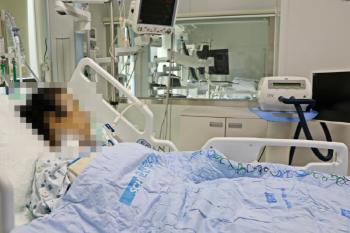The mortality rate of low-income health insurance subscribers after acute myocardial infarction is 1.34 times higher
Jun 25, 2025
|
A joint research team led by Professor Kang Hee-taek of Severance Hospital's Family Medicine Department (Yeonseui University's Family Medicine Class) and Won Ho-yeon of the Department of Circulatory Medicine at Chung-Ang University Hospital announced on the 25th the difference in mortality rate compared after dividing patients who suffered from "acute myocardial infarction" into local health insurance subscribers and workplace subscribers.
The results of this study were published in the latest issue of 『Nutrition, Metabolism & Cardiometabolic Diseases』.
Among cardiovascular diseases considered to be the leading cause of death worldwide, acute myocardial infarction has a particularly high mortality and recurrence rate. Accordingly, the research team compared and analyzed the types of health insurance for all Koreans with acute myocardial infarction, which is common and fatal.
The types of health insurance are divided into those who are employed in the workplace and those who are local subscribers who are employed by the workplace and those who are unemployed. Since health insurance premiums vary depending on income regardless of type, it is possible to distinguish high-income and low-income people even within workplace and local subscribers.
It is already known that the mortality rate is greatly affected by socioeconomic indicators such as education level, occupation, and economic power. In addition, socioeconomic status is related to preventive activities for health promotion and access to quality medical services.
Based on the Health Insurance Corporation database, the research team classified 5,971 out of 30,398 people diagnosed with acute myocardial infarction for a year from 2007 into 4329 workers and 1,642 local subscribers. Those who could affect the study results, such as being diagnosed with malignant tumors before acute myocardial infarction, were excluded.
After that, the difference in mortality was analyzed by reclassifying each type of insurance subscriber into the third quartile (upper, middle, and lower) based on premium payments. As a result, the mortality rate of local subscribers for the average follow-up period of 13.5 years was 1.11 times higher than that of workplace subscribers.
In addition, the group with the lowest income among local subscribers was 1.34 times higher than the group with high income (middle and upper income). However, there was no difference in mortality rate according to the income category among employee subscribers.
Based on these results, the research team concluded that socioeconomic status according to work and income greatly affects mortality after acute myocardial infarction. In particular, it was confirmed that among local subscribers, the mortality rate differed significantly according to the economic gap.
This means that medical gaps, such as access to medical care and awareness of healthy daily life, continue to affect health. The research team believes that while workplace subscribers have excellent access to medical care such as regular health checkups due to regular income and job security, local subscribers have weakened their health due to the burden of medical expenses, low health understanding, and low physical activity.
Professor Kang Hee-taek confirmed that there is health inequality in our society, where the mortality rate varies according to differences in socioeconomic levels"In particular, health policies such as health education for local subscribers and early screening of cardiovascular diseases need to be supplemented." he said.
|
This article was translated by Naver AI translator.















